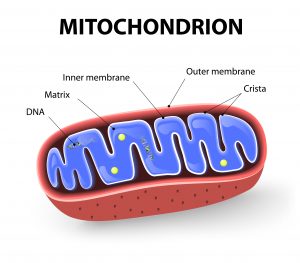What is the ‘energy test’?
BBC recently reported the article ‘Fertility Boost through Energy Test’ that was based on the data presented at the European Society of Human Reproduction and Embryology (ESHRE 2016) in Helsinki. Unsurprisingly, there is little relevant information for patients to understand if this something that would benefit them.
The average age at which women have their first child is increasing. Many couples with previous failed attempts are willing to try any intervention that will maximise their chance of IVF success. Therefore, I thought of writing about what an energy test is, what it means for their treatment, and whether it is available for UK IVF patients.
The ‘energy test’ defined
The ‘Energy Test’ is also called the ‘Mito Score’. The test measures the level of the mitochondrial DNA in the blastocyst or day five embryos. So, what is the ‘Mitochondria’? Mitochondria are microscopic structures inside the embryo cell, AKA the ‘Powerhouse of the cell’.

The role of mitochondria is to produce energy molecules for the cell. This energy is used to carry out the different housekeeping activities inside the cell. Like an adult, the embryo also has a certain level of activity or metabolism. It’s believed that the embryos have an optimum rate of metabolism or energy requirement. This is also referred to as the ‘quiet embryo’ hypothesis.
Too much energy needed by the embryo cells suggests an embryo may be abnormal and will run out of the energy. It will start developing and lead to failure of implantation of the embryo following an IVF treatment or a miscarriage. The cells in the rapidly developing embryos are dividing at a fast pace and therefore have higher mitochondrial DNA content.
What can the ‘energy test’ do for IVF patients?
The ‘energy test’ or ‘mito score’, measures the amount of the genetic material inside the mitochondria (Mitochondrial DNA). The test is carried out at the blastocyst stage. It can also be done at the earlier stages of the embryo development such as day 3 cleaved stage. It then gives a score. The higher the score, the more likely that the embryo is abnormal and less likely to implant. Such patients will also be more likely to experience a miscarriage.
By measuring the Mito score, the embryos with lower Mito score can be selected for embryo transfer. This has been reported to improve the IVF success rates by almost 10-20%.
It is well known that embryos belonging to women at an older age (38 years or more) are more likely to be genetically abnormal or aneuploidy. Therefore, these embryos are more likely to have a higher mitochondrial DNA or energy levels. On the other hand, younger women with a history of multiple miscarriages or previous IVF failures may have a higher chance of having genetically abnormal embryos.
Is the ‘energy test’ available for UK patients?
The ‘energy test’ is an interesting development which is showing potential to improve the IVF success rates even further. There is a need for larger studies to ensure the safety of the test. This test is not available in the UK. Currently, Human Fertilisation Embryology Authority (HFEA) is considering whether to grant the approval and make the test available to the patients.






